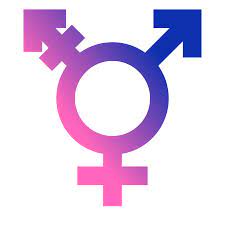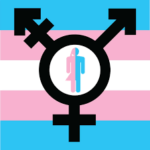The conversation around gender identity has become increasingly prevalent in recent years, shining a light on the complexities and nuances of what it means to be transgender. Among these identities, the term "transgender woman" represents a significant aspect of this dialogue. A transgender woman is someone who was assigned male at birth but identifies and lives as a woman. Understanding this definition is crucial in promoting acceptance, respect, and inclusivity in society. This article aims to delve into the meaning of being a transgender woman, the societal importance of gender identity, and the challenges faced within this community, while also celebrating the lives and achievements of transgender women.
What Does It Mean to Be a Transgender Woman?
Being a transgender woman involves a deep understanding of one’s gender identity, which may not align with the sex assigned at birth. This means that while a transgender woman may have been labeled male when born, she identifies as a female. This distinction is pivotal; gender identity is an internal sense of self that can often diverge from societal expectations based on physical characteristics. The journey of self-discovery and acceptance can vary significantly from person to person, but it often involves a recognition of one’s true self and a desire to live authentically.
Transgender women may choose to undergo various forms of transition, which can include social, medical, and legal changes. Social transition might involve changing one’s name, pronouns, and presentation to better reflect their gender identity. Medical transition can encompass hormone therapy and surgeries, although not all transgender women pursue these options. Legal transition involves changing identification documents to align with their gender identity. Regardless of the path taken, every individual’s experience is unique and should be respected.
The Importance of Gender Identity in Today’s Society
Gender identity plays a crucial role in how individuals perceive themselves and interact with the world around them. In contemporary society, recognizing and validating diverse gender identities is essential for fostering a culture of respect and understanding. This is particularly important for transgender women, who often face discrimination and violence due to societal misunderstandings about their identities. Accepting and affirming one’s gender identity can greatly enhance mental health, self-esteem, and overall well-being.
Furthermore, acknowledging gender identity is key to advocating for equal rights and opportunities. When people understand that gender is not strictly binary, it opens the door for more inclusive policies and protections. This is especially vital in spaces like healthcare, education, and employment, where transgender women may encounter systemic barriers. By promoting awareness and education around gender identity, society can work towards dismantling the stigma and prejudice that many transgender individuals face daily.
A Brief History of Transgender Women Throughout Time
The history of transgender women is rich and varied, spanning across different cultures and eras. In many ancient societies, there were recognized roles for individuals who defied traditional gender norms. For example, various Indigenous cultures in North America honored Two-Spirit people, who embodied both masculine and feminine traits. Similarly, in some ancient civilizations, transgender individuals were revered in religious contexts or held significant social roles, reflecting a more fluid understanding of gender.
However, the history of transgender women has also been marked by challenges and oppression. The medicalization and pathologization of transgender identities during the 20th century led to stigmatization and marginalization. In more recent history, the fight for transgender rights has gained momentum, particularly following pivotal events like the Stonewall Riots in 1969. The historical context of transgender women highlights the ongoing struggle for dignity, respect, and equality, as well as the resilience and strength within the community.
Common Misconceptions About Transgender Women Explained
There are many misconceptions about transgender women that can hinder understanding and acceptance. One prevalent myth is that being transgender is a trend or phase, which undermines the authentic experiences of many individuals. Gender identity is not a choice or a fad; it is an intrinsic part of a person’s identity that is developed over time. Misunderstanding this can lead to harmful stereotypes and discrimination.
Another common misconception is that all transgender women undergo medical procedures to transition. In reality, not every transgender woman chooses to pursue medical transition, and this decision is deeply personal. Factors such as financial limitations, health considerations, and personal preference all play a role in this choice. It’s essential to recognize that a person’s worth and identity are not contingent on their transition journey; being a transgender woman encompasses much more than physical changes.
The Journey of Transition: What It Involves
Transitioning is a personal journey that varies widely among transgender women, encompassing various facets of life—social, medical, and legal. Social transition involves outwardly expressing one’s gender identity through changes in clothing, hairstyle, and name. This step can be incredibly liberating, allowing transgender women to align their external appearance with their internal identity. However, it can also come with challenges, such as facing societal judgment or rejection.
Medical transition, on the other hand, may include hormone replacement therapy (HRT) or surgeries, such as breast augmentation or gender-affirming surgeries. These medical interventions can play a pivotal role in alleviating gender dysphoria, enhancing overall well-being, and improving quality of life. However, not all transgender women choose medical transition, and this does not diminish their identity or authenticity. Every journey is unique, and it’s important to respect and honor each individual’s choices.
How to Support Transgender Women in Everyday Life
Supporting transgender women starts with education and awareness. It’s essential to listen to their stories and experiences, acknowledging their struggles and triumphs. Using correct names and pronouns is a simple yet significant way to show respect and validation. Being open to learning about transgender issues can help combat stereotypes and misconceptions that perpetuate discrimination.
Moreover, advocating for transgender rights in everyday conversations and social settings is crucial. This can include standing against transphobic remarks, supporting policies that promote equality, and amplifying the voices of transgender women in discussions about their rights and experiences. Creating inclusive environments, whether in workplaces, schools, or community spaces, fosters a sense of belonging for transgender women and contributes to a more equitable society.
The Role of Activism in Transgender Rights Movement
Activism has been instrumental in advancing the rights of transgender women and addressing the injustices they face. From the early days of the LGBTQ+ rights movement to contemporary advocacy efforts, individuals and organizations have fought tirelessly for equal rights. Activism has sparked significant changes in legislation, healthcare access, and societal attitudes, creating a more inclusive environment for transgender individuals.
Transgender activists often share their personal stories to raise awareness and educate others about the unique challenges they face. By bringing visibility to issues such as discrimination, violence, and healthcare disparities, these activists inspire others to join the fight for equality. The power of activism lies in its ability to create change by uniting people in a common cause, ultimately leading to a more understanding and supportive society.
Celebrating Transgender Women: Stories and Achievements
Celebrating transgender women and their achievements is vital for representation and inspiration. Figures like Marsha P. Johnson and Sylvia Rivera were instrumental in the fight for LGBTQ+ rights in the 1960s and 70s. Their courage and activism paved the way for future generations, highlighting the importance of transgender voices in social justice movements. Today, contemporary figures such as Laverne Cox and Janet Mock are breaking barriers in entertainment and media, showcasing the diversity and resilience of transgender women.
Furthermore, recognizing everyday achievements within the transgender community is equally important. From successful professionals to artists and activists, transgender women are making significant contributions across various fields. Celebrating their stories helps to foster acceptance and pride within the community, encouraging others to embrace their identities and pursue their dreams unapologetically. It’s important to create spaces that uplift and honor the achievements of transgender women, ensuring their voices are heard and valued.
In conclusion, understanding and defining the term "transgender woman" goes far beyond mere labels; it encompasses a rich tapestry of experiences, struggles, and triumphs. By educating ourselves about the importance of gender identity, acknowledging historical contexts, and dispelling misconceptions, we can create a more inclusive society for transgender women. Supporting and celebrating their journeys—through advocacy, representation, and recognition of their achievements—contributes to a world where everyone can live authentically and freely. Embracing diversity in gender identity not only enriches our communities but also fosters a greater sense of humanity for us all.


